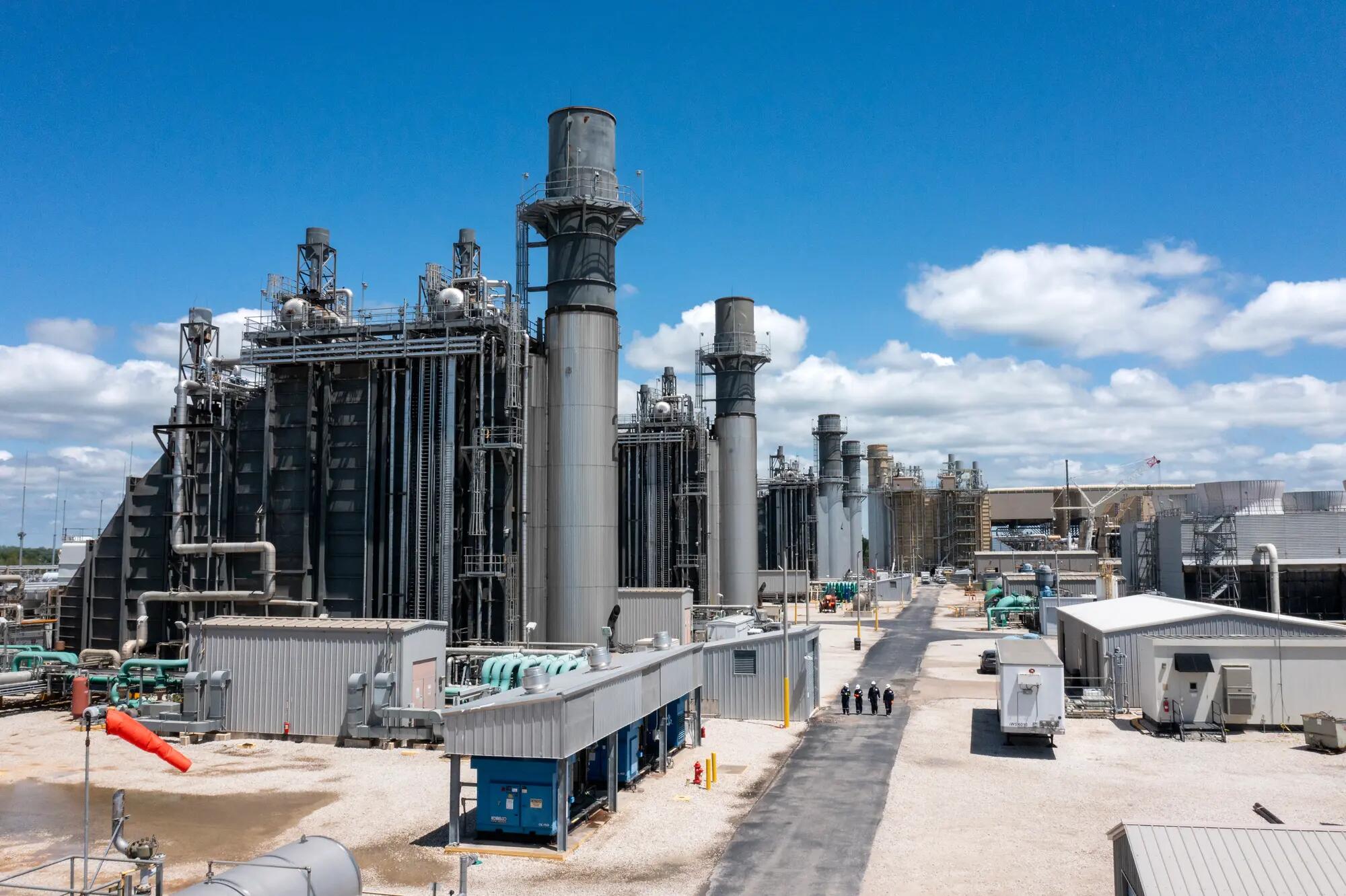.webp?t=resize&width=792&height=0)
Developing a Portfolio of CCGTs in the United States
Flexible Facilities that Complement Renewable Energies and Contribute to the Stability of the Power Grid
In response to the intermittency challenges inherent in renewable energies, combined-cycle gas turbine (CCGT) power plants play a vitally important role in stabilizing energy production while reducing carbon emissions compared to conventional thermal power plants. This technology is essential for migrating to a more sustainable and reliable energy. At TotalEnergies, we are developing a portfolio of CCGTs to support our wind and solar capacity and ensure that electricity is available 24/7 for our customers.
.webp?option=default&outputWidth=480&outputHeight=480)
A combined-cycle gas power plant is an electricity generation facility that uses two thermodynamic cycles to maximize energy efficiency. Firstly, natural gas is burnt in a gas turbine, which produces hot gases under high pressure. These gases turn the turbine, which generates electricity.
Instead of venting the exhaust gases, they are directed towards a heat recovery boiler. In the boiler, the heat from the exhaust gases is used to produce steam by heating up water. The steam produced is then sent to a steam turbine, which in turn generates electricity.
This dual process enables the energy contained in the natural gas to be used more efficiently, thereby reducing energy losses and increasing electricity production. Therefore, combined-cycle power plants deliver greater performance and create less pollution than traditional power plants.
Another upside is that CCGTs can be quickly started up and shut down, meaning that they are especially well suited to responding to variations in electricity demand. As such, they can help overcome the shortcomings with such intermittent renewable energy sources as wind and solar power.
CCGT Operating Diagram
How does a CCGT work?
- Ambient air is compressed and headed to the combustion chamber.
- Natural gas is injected. At combustion chamber exit, the temperature of the gases is around 1,300°C.
- The expansion of the hot gases triggers the rotation of the gas turbine’s shaft.
- Hot Flue Gases (550°C) are headed to the inlet of a head recovery steam generator.
- The expansion of steam triggers the rotation of the steam turbine’s shaft.
- Low pressure steam condenses through a cooling system and is pumped back to the steam generator at low pressure level.
- The generator produces electricity, 2/3 of which comes from the gas turbine and the remaining third from the steam turbine.
- The electricity generated is fed into the high-voltage grid.
What are the benefits of a CCGT over a conventional thermal power plant?
Combined-cycle gas turbine (CCGT) power plants boast a number of benefits that make them the ideal choice for producing flexible and always available electricity. Their energy efficiency, low carbon emissions and ability to start up and shut down quickly are among their main advantages over a conventional thermal power plant.
How CCGTs Support Renewables: Understanding the Load Factor
.webp?option=default&outputWidth=480&outputHeight=480)
The load factor is used to measure a power plant’s efficiency. It is defined as the ratio between actual electricity production over a given period and the maximum possible production level if the
plant were operating at full capacity all the time. In other words, it indicates the proportion of time during which a power plant produces electricity compared with its maximum potential.
Not all power generation units operate at full capacity all the time. For renewables, the load factor provides an idea of their intermittency. It is not chosen, but imposed by weather conditions. For other generating facilities, such as CCGTs, the load factor is chosen or controlled according to whether it is economically viable to run the plant. That explains why it is important to use CCGTs to offset the intermittent nature of renewable generation.
